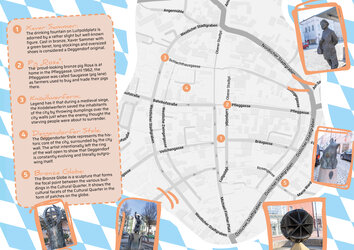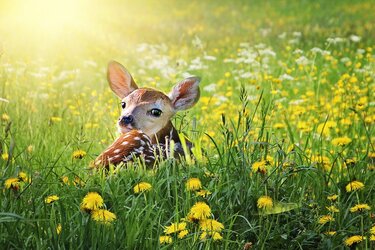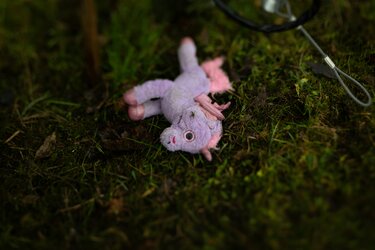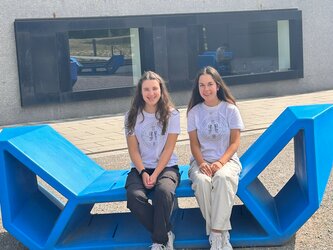
On beautiful days, when the sun is shining and the grass is lush, fawns are vulnerable due to their defenseless posture in open fields. They are often difficult to spot by mowing operations and agricultural machines because they are hidden in the dense grass. However, fawn rescue teams' unwavering dedication has made it possible for these little animals to survive in the wild and grow up unharmed. In theory, there are animal protection laws that require farmers to search for fawns before mowing operations. However, this is not always the case, and fawns are sometimes chopped up alive.
Why is fawn rescue of special importance?
In the first few weeks of their lives, fawns rely heavily on their hiding spots to avoid predators. However, their typical hiding spots in the grass make them vulnerable to threats from intensive farming and the use of mowing machines. It is crucial to quickly locate and rescue these animals to help preserve their populations. Fawns are not quick enough to escape machines on their own. Without active removal from the fields, they have no chance of survival.
How does fawn rescue work?
A team of fawn rescuers typically includes a hunter, a drone pilot, and volunteers. The fields are thoroughly searched using drones, which nowadays use mapping and thermal detection technology to locate fawns. The hunter is responsible for ensuring the safety of the fawns and releasing them in a secure area. The volunteers follow the directions of the drone pilot and the hunter to carefully locate and extract the fawns. This coordinated effort requires precision and quick thinking to protect the fawns from the approaching mower.
The role of the Community
Farmers, hunters, and environmentalists must collaborate to protect fawns. This requires a joint effort. We can raise awareness and provide training to increase support for fawn rescue in the community. The general population can often get involved in search missions. Collaboration with farmers is crucial. However, local authorities and community members also have a significant role in reporting any instances of fawns being chopped alive due to a lack of field searches prior to mowing. This is a federal offense against animal rights and should always be reported to the authorities.
How can we help?
There are many opportunities to participate in fawn rescue. Every contribution counts, whether it is financial support for training and equipment purchases or local fawn rescue programs. Additionally, lives can be saved by informing nearby fawn rescue organizations about probable fawn hiding sites. Fawn rescue organizations are usually non-profit organizations that rely entirely on donations and the work of their members. Drone equipment and licenses for pilots can be expensive. However, helpers who want to join expeditions in the field are always welcome and needed. Any assistance is appreciated. Please contact your local fawn rescue association.
To take with you
Fawn rescue not only helps young deer but also highlights the significance of safeguarding the environment and promoting animal-human cohabitation. By working together to protect these fragile species, we demonstrate our ability to preserve and maintain the environment and its diverse wildlife. Each rescued animal serves as a reminder of the human race's responsibility to protect the environment. Every act of dedication, whether it involves giving, volunteering, or educating others about the importance of these actions, contributes to the development of a more compassionate and sustainable society. Let's continue to advocate for fawn rescue and consider wildlife preservation a shared responsibility.
Daniel Rodriguez Perales.
Daniel Rodriguez Perales is a Global Public Health student with a background in Health Tourism. He has been living in Germany for the past few years and is currently a member of the board team of a fawn rescue association called Kitzrrettung Saarland e.V.. Daniel is a health enthusiast, foodie, and globetrotter with a special interest in wellbeing.










